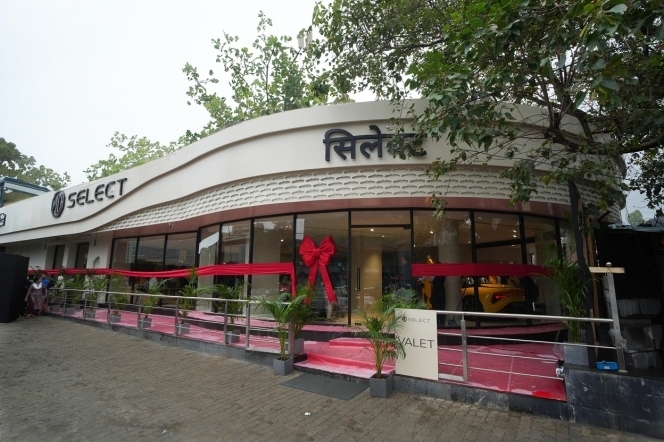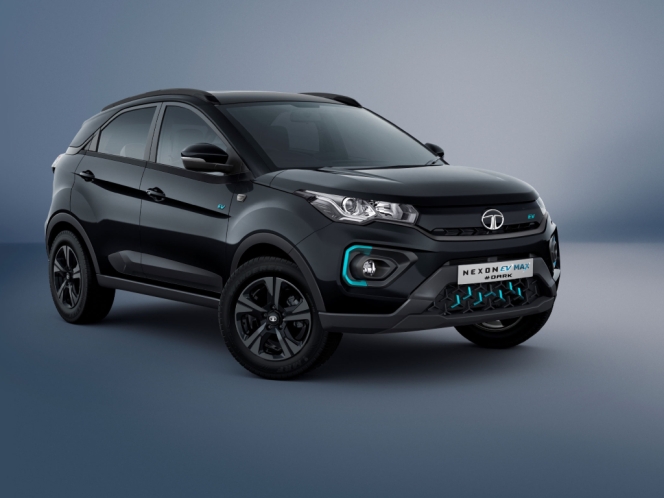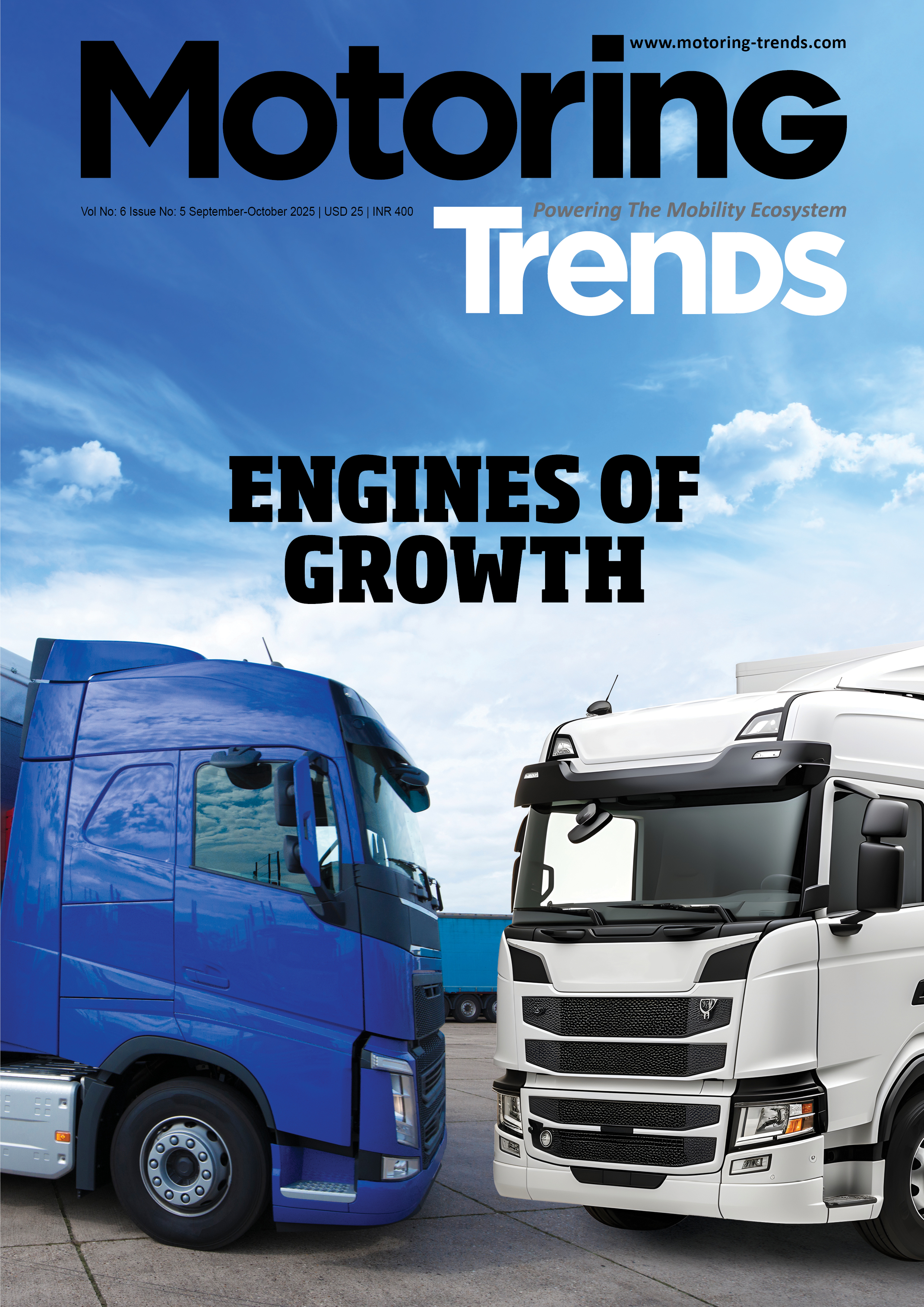Toyota Celebrates 20th Anniversary Of Prius With Unique Edition
- By 0
- June 17, 2020

The 2001 Toyota Prius, the world's first production hybrid car, had arrived, and it would profoundly change the trajectory of automotive propulsion evolution.
Over the next two decades, Toyota would go on to sell more than 6 million Prius vehicles worldwide and more than 3.6 million total hybrid models (including Lexus) in the US. Toyota Prius sales in the US reached 1.9 million through 2019, and the model name became synonymous with hybrid technology. (The original Prius went into production for the Japanese market in 1997.)
And so, Toyota is marking the special anniversary of the groundbreaking Prius, the foundational car of its global hybrid leadership, by offering the Prius 2020 Edition for model year 2021. Toyota will offer 2,020 of these special models, based on the well-equipped XLE FWD grade. Available in a choice of Supersonic Red or the new Wind Chill Pearl, the 2020 Edition features striking black exterior trim and unique features, including a color-keyed rear spoiler.

The 2020 Edition model includes black inserts for the 17-inch alloy wheels, blackout headlight components and trim, B-pillars and mirror housings. Unique to the Prius 2020 Edition are a ‘2020’ insignia key glove/fob and floor mats, as well as black shift knob and interior A-pillar trim and smoked HVAC vents.
The overall look is both sporty and elegant, with just a touch of mischief. But there's nothing mischievous about a car rated at a manufacturer preliminary-estimated 54 city MPG / 50 highway MPG / 52 combined MPG and equipped as standard with one of the auto industry's most advanced driver-assist safety systems.
 Toyota Safety Sense 2.0
Toyota Safety Sense 2.0
The Prius, which already had Toyota Safety Sense (TSS-P) standard, steps up to the more capable TSS 2.0 for 2021. This latest version of the critical safety system includes: Pre-Collision System with Low-Light Pedestrian Detection; Full-Speed Range Dynamic Radar Cruise Control; Bicyclist Detection; Lane Departure Alert; Automatic High Beams and Road Sign Assist.
Pre-Collision System with Pedestrian Detection is designed to offer automatic braking capability, under certain conditions, should the driver not react in time in an emergency situation. Blind Spot Monitor with Rear Cross Traffic Alert and Intelligent Clearance Sonar with Intelligent Parking Assist are also standard.
Also for 2021, all but the Prius Limited add Android Auto compatibility. (Apple CarPlay compatibility was already standard on 2020 Prius models.)
The Prius mission was right in its name; it is Latin for “first” or “original,” and can also mean “to go before.” Now, look at all the hybrids that have come since.
The Prius is one of 10 Toyota hybrid models, and one of 11 electrified vehicles with Mirai, a Hydrogen Fuel Cell Electric Vehicle (FCEV), available for 2021. Others include the first-ever Corolla Hybrid, Camry Hybrid, RAV4 Hybrid, Avalon Hybrid, Highlander Hybrid, RAV4 Prime and Prius Prime.
The Shape of Progress
The unique design cheats the wind with an ultra-low 0.24 coefficient of drag. An automatic grille shutter reduces aerodynamic drag by closing when airflow to the radiator is not needed.
Standard Bi-LED headlamps and LED rear combination lamps not only provide better light than halogens, but they also reduce energy consumption and give a longer service life. A full-width glass panel beneath the rear spoiler aids rearward visibility while also serving as a distinctive Prius design feature.
The foundation of Prius efficiency is the Toyota Hybrid System II. It operates much in the same fashion as the original hybrid system in the 2001 Prius, but is more compact, more powerful, and more fuel-efficient. In the Prius, the system combines the output of a high-efficiency 1.8-liter four-cylinder Atkinson-cycle gasoline engine with that of two motor-generators through an electronically controlled planetary-type continuously variable transmission (CVT).
The advanced Power Control Unit is the key to extracting the greatest efficiency from the powertrain. In most situations, the Prius launches on battery power alone and then seamlessly starts the gas engine and blends its output once underway, turning it off when its power is not needed.
 Thanks to ultra-low internal friction and efficient combustion, the Prius gasoline engine exceeds 40 percent thermal efficiency. The air conditioning system, which uses a quiet electric compressor, works intelligently to maximize energy efficiency, with the Smart-flow (S-FLOW) mode directing airflow only to seated occupants to conserve energy.
Thanks to ultra-low internal friction and efficient combustion, the Prius gasoline engine exceeds 40 percent thermal efficiency. The air conditioning system, which uses a quiet electric compressor, works intelligently to maximize energy efficiency, with the Smart-flow (S-FLOW) mode directing airflow only to seated occupants to conserve energy.
The Prius XLE grade on which the 2020 Edition model is based comes standard with 17-in. alloy wheels, Safety Connect; heated, SofTex-trimmed 8-way power driver's seat; SofTex-trimmed heated tilt/telescopic steering wheel; 3-door Smart Key system with Push Button Start; remote illuminated entry, rear wiper, and Qi wireless phone charging tray that accommodates larger phones.
The standard Toyota Audio system includes a 7-in. touch-screen display; 6 speakers; Apple CarPlay, Android Auto and Amazon Alexa compatibility; auxiliary audio jack, one USB 2.0 port with iPod connectivity and two 2.1-amp USB charge ports; advanced voice recognition; Bluetooth hands-free phone capability, phone book access and music streaming; Siri Eyes Free, and an integrated backup camera display.
All Prius models share the familiar central screen interface, a signature feature in every Prius since the original. The 4.2-in. color Dual Multi-Information Display with customizable screens includes Energy Monitor and Hybrid System Indicator with Eco Score, Eco Savings Record, Drive Monitor, Eco Wallet, and Eco Diary features, plus displays for climate control, driver support systems, audio system content, and the navigation system.
First Generation - A Huge Leap in Fuel Efficiency
That original Prius combined output of a 70-hp gas engine and 44-hp electric drive motor. A second electric motor-generator served as the starter for the gas engine and also generated electricity for the drive motor and nickel-metal hydride (NiMH) battery pack.
The first Prius achieved EPA estimated 42 city MPG / 41 highway MPG / 41 combined MPG. The higher figure for city driving reflected the hybrid powertrain making greatest use of the battery and electric motor in urban driving. The first Prius also used an auto stop/start system to shut off the gas engine at stoplights under certain circumstances. Such systems have since become commonplace, including for non-hybrids.
Second-Generation: A Huge Leap in Everything
A new brake-by-wire system improved regeneration and brake feel. A new air conditioning system used an electric compressor, which allowed it to operate without the gas engine running. Even with its gain in power and larger body for the second-generation model, its combined fuel economy jumped by 12 percent to 46 MPG.
Third Generation: 50 MPG and a New Family
The Prius marked its 10th anniversary in the US with an all-new third generation model, gaining more power and higher fuel efficiency. Its 50 combined MPG was a new milestone. This generation also brought new models, including the first Prius Plug-in Hybrid, a new compact Prius c for under USD 20,000 and a new, larger Prius v with crossover-like room and versatility. Prius models began offering Pre-Collision Braking and other advanced safety tech.
Fourth Generation: More Choices, Higher Efficiency
Based on the Toyota New Global Architecture-K platform (TNGA-K), the fourth-generation Prius is the most efficient and quietest in its history. The fourth-gen Prius introduced the top-of-line Prius Prime plug-in hybrid (PHEV), the Prius L ECO, and the Prius AWD-e model with all-wheel drive. (MT)
Honda Cars India Reports 10,518 Unit Wholesales In October 2025
- By MT Bureau
- November 01, 2025

Honda Cars India, a leading passenger vehicle manufacturer, has reported total wholesales of 10,518 units for October 2025.
The company recorded domestic sales of 6,394 units for the month, which marks a 15.3 percent growth as compared to 5,546 units last year.
Honda also exported 4,124 units in October 2025. In comparison, exports in October 2024 stood at 4,534 units. The company noted the strong performance of the Honda Amaze as a key driver of the growth.
Kunal Behl, Vice-President, Marketing & Sales, Honda Cars India, said, “The festive sales and GST 2.0 announcement fuelled robust demand across our line-up of City, Amaze and Elevate during October. The Amaze being the only car under 10 lakh price segment to offer ADAS safety and smooth CVT performance has been strongly appreciated by consumers registering strong sales growth.”
JSW MG Motor India Reports 9% Decline In October Sales
- By MT Bureau
- November 01, 2025

JSW MG Motor India has reported a decline of 9 percent in it wholesales for October 2025, with sales of 6,397 units, as compared to 7,045 units sold for same period last year.
On the other hand, the company reported a 20 percent YoY increase in wholesales during the August–October 2025 festive period.
The MG SELECT model retained its second position in the luxury electric vehicle (EV) segment, registering an impressive 62 percent MoM growth.
Hyundai Motor India Reports 53,792 Wholesales In October
- By MT Bureau
- November 01, 2025

Hyundai Motor India, one of the leading passenger vehicle manufacturers, has achieved total monthly sales of 69,894 units in October 2025. The volume includes 53,792 units in domestic sales.
The company stated its performance was driven by the domestic market, and it also bolstered its position as a global manufacturing hub, with exports touching 16,102 units, marking an 11 percent YoY growth.
Furthermore, the Hyundai Creta and Venue SUV duo achieved their second-highest-ever combined monthly sales of 30,119 units.
Tarun Garg, Whole-time Director & Chief Operating Officer, Hyundai Motor India, said, “October 2025 was a month driven by the festivals of Dussehra, Dhanteras and Diwali, further complimented by the positive impact of GST 2.0 reforms. This provided a significant boost to the Indian automotive industry. At Hyundai Motor India, we witnessed robust market demand and high consumer enthusiasm leading to second highest monthly sales of our formidable SUV duo – the Hyundai Creta and Venue combined, with 30,119 units sold. We expect to accelerate this momentum with the upcoming launch of all-new Hyundai Venue, which is already open for bookings.”
Tata Motors Reports Record Passenger Vehicles And Electric Vehicle Wholesales In October
- By MT Bureau
- November 01, 2025

Tata Motors Passenger Vehicles has reported wholesales of 61,295 units in total sales in October 2025, marking a 26.6 percent growth compared to 48,423 units sold a year ago. This performance delivered record-breaking monthly wholesales for the second consecutive month, driven by momentum during the festive season.
For October, the company saw sales records across key segments during the month including, 47,000 SUVs, achieving the highest-ever 77 percent share in monthly sales.
EV wholesales hit an all-time high of 9,286 units, surging 73.4 percent YoY. The Nexon SUV recorded 50 percent YoY volume growth due to the popularity of its multi-powertrain offerings.
The Harrier and Safari models achieved a new high, selling 7,000 units.
Overall domestic sales, including EVs, grew by 27 percent to 61,134 units. Monthly bookings also reached an all-time peak. The company achieved a landmark festive milestone, delivering over 100,000 vehicles between Navratri and Diwali, marking a 33 percent YoY growth.






Comments (0)
ADD COMMENT